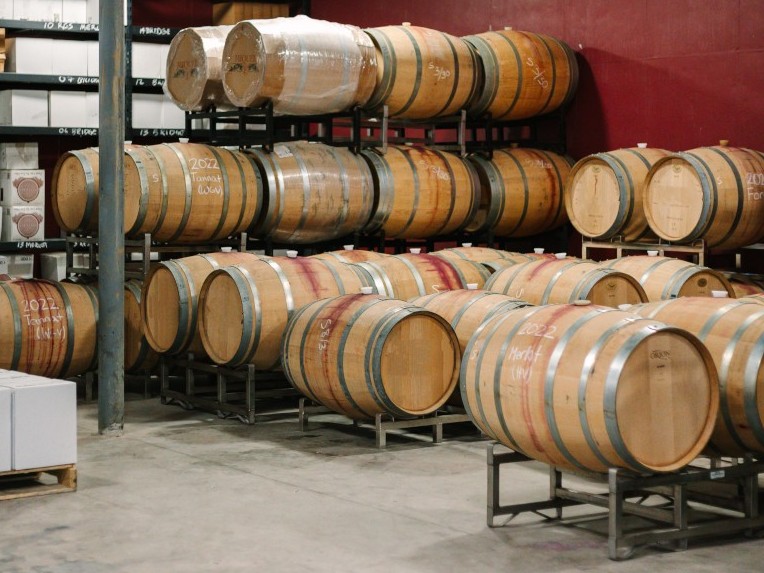
Photo by: Savannah Smith Photography
Can we talk about oak for a minute? And by talk, I mean literally. If you haven’t been listening to our “Voices of the Vine” podcast, Virginia and I just took several episodes to cover all-things-oak. From oak history to how oak is manufactured for wine barrels, we looked at it ALL.
Here are some major takeaways that we found during these months of oak research, writing, discussing, and talking!
1. The Integration of Barrels Changed the Way We Store Wine
In Episode 9 (Everyone Loves a Good Barrel Room… But Where Did They Come From?), we dived into the historical context behind our heavy use of oak barrels during wine production. The Ancient Romans popularized the use of oak barrels in fermenting, storing, and transporting wine across the world. One of the oddest findings associated with the Roman’s choice in storage vessel was related to how the greater use of wood actually deteriorated wine quality compared to when wine was stored in amphora. This is because oak barrels oxygenate wine, which, over time, leads to detrimental changes like wine oxidation, volume losses, and wine spoilage (if the wine is not properly preserved). This knowledge was so commonplace during many centuries of wine production, that wine stored in barrel longer eventually became less expensive than wine stored in barrel for a shorter amount of time. This is because the longer-aged wines were spoiled and everyone knew it. In fact, it wasn’t until the Burgundians figured out how to modulate environmental (cellar) temperature that the concepts regarding wine barrel storage began. Today, we may take barrel care and management for granted, but this episode on barrel history really highlights how issues with wine storage in barrels have been prevalent for centuries.
2. Barrel Ordering May Accommodate Your Schedule
One of the challenges many winemakers face in the Midwest and Eastern parts of the country is ordering barrels at a time that is appropriate for them. In Episode 13, Gina Shay (Sales, Greater USA & Canada with Trust Cooperage) explains how container shipments are based around the French calendar for holidays and vacations. However, as many winemakers require knowledge on the vintage before investing in barrels, Gina reminded listeners that several cooperages will hold stock barrels for [their] late-season orders. Don’t be afraid to ask your barrel suppliers for their shipment schedules and various times that you can order barrels during the calendar year to make sure it accommodates your needs.
3. Adjusting a Barrel Program for the Vintage
Often, winemakers get hooked on barrel brands or suppliers. But as Gina Shay (Sales, Greater USA & Canada with Trust Cooperage) explained in Episode 13, for those wineries in regions with vintage variation, it’s probable there will be years where the winemaker has to change barrel decisions to some degree. This can be one of the most challenging parts of maintaining a barrel program in regions that have vintage variation in their wines. Learning how to purchase new barrels that may be outside of the “norm” for that wine brand is a great lesson in the artistic and creative side of winemaking. And, to be honest, sometimes it does require some trial and error, trying out new barrel brands, and taking profound records. (DG Winemaking Members and Clients can use the Wine Blending Log worksheet to track sensory perceptions quickly and easily when tasting through wine barrels and tanks full of wine.)
Use skilled individuals to help alter a barrel or oak adjunct regime when the season may provide sensory changes in your wines. I regularly recommend Gina (for barrels or oak adjuncts/alternatives) and Scott Labs (for oak adjuncts/alternatives) to many of my clients for this task. I have found they either have good familiarity with wines outside of the West Coast or they can provide you with a detailed oak adjunct/alternative dosage to get you results that you are looking for in the wine (e.g., degree of toasting, how much oak aroma/flavor is desired in the wine, etc.).
4. Sustainability and Barrel Selection
One thing I learned during our interviews in Episode 13 and Episode 14 with Gina Shay (Sales, Greater USA & Canada with Trust Cooperage) was the difference in oak barrel production between American and French/European oak. For wineries that have strong sustainability messages associated with their brand, considering French/European oak may align better with their values and can offer unique marketing messages. This is because most French/European forests regulate the re-planting of oak trees after current ones are harvested for barrel use. Given that it takes about 150 years to harvest an oak tree for a wine barrel, this practice is something that many wine brands may want to get behind. However, as we learned in Episode 11 and Episode 12, some regions – and some American wine brands – may want to align barrel selection with American-based oak barrel producers. There are still unique marketing messages associated with choosing American oak, and truly, American oak offers alternative chemistry and sensory characteristics compared to a French barrel. If sustainability is still a part of your winery’s brand and you still want to use American oak barrels, it never hurts to start inquiring to your suppliers and getting more information. Often, these details can contribute to your brand’s story, which is often desirable to many modern wine consumers that like to align their purchasing habits with brands they value.
5. Wines Aged On/In Oak Require Different Food Pairing Suggestions
Unlike their fruity counterparts, a lot of oak-aged wines require some detailed consideration when it comes to food and wine pairings. Luckily, I provided 2 general suggestions to my Sip & Swirl audience for pairing oaky wines at home that wine brands can also use when marketing or pairing their wines for events:
- consider caramelized foods and
- grilled foods.
Often, there’s a plethora of unique food pairing options for oaky wines when you consider these two principles, and thinking outside-of-the-box can provide you with an edge other wineries are not considering.
Don’t forget that taking time to fine-tune your sensory skills can profoundly impact your winemaking decisions. Here at DG Winemaking, I often encourage winemakers to become more familiar with wine styles, as this knowledge can powerfully help determine what types of wine you want to produce and how to produce those wines. This concept goes far beyond yeast selection during primary fermentation and focuses on outlining a production plan that places winemaking operations in the ideal order to obtain a desired sensory result.
It’s likely you could benefit from more wine sensory knowledge. Thus, if you are currently making oaky wines, I’d encourage you to review Virginia and my list of various oaked wines from Episode 10. Not only do we explore a number of different oaked wine styles, but we even highlight the differences between some of the Old World and New World variations in oak-driven-wines. Remember, the knowledge gained through these sensory experiences can help you better define the style of wines you want to create. This, in turn, helps outline the ideal processing that is likely to craft the wine style of choice.
The views and opinions expressed through dgwinemaking.com are intended for general informational purposes only. Denise Gardner Winemaking does not assume any responsibility or liability for those winery, cidery, or alcohol-producing operations that choose to use any of the information seen here or within dgwinemaking.com.
